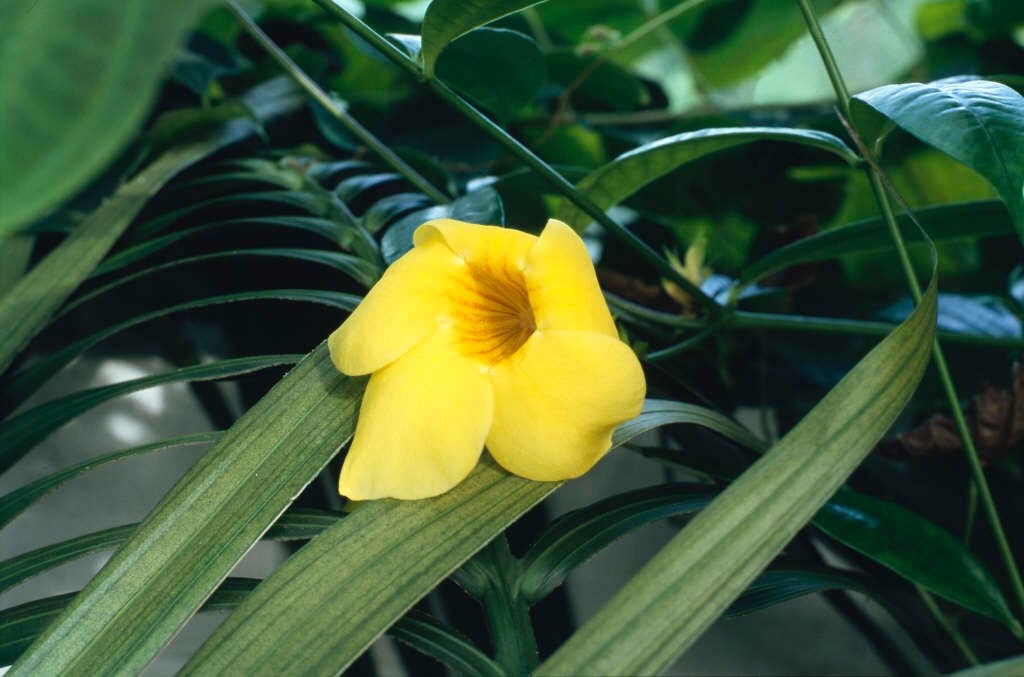Not the plant you're looking for? Search over 300,000 plants
Conservatory Greenhouse
Size
Ultimate height
8–12 metresTime to ultimate height
10–20 yearsUltimate spread
2.5–4 metresGrowing conditions
Loam
Sand
Moisture
Moist but well–drainedpH
Acid, NeutralColour & scent
| Stem | Flower | Foliage | Fruit | |
| Spring | Green | |||
|---|---|---|---|---|
| Summer | Yellow | Green | ||
| Autumn | Yellow | Green | ||
| Winter | Green |
Position
- Full sun
Aspect
South–facing or West–facing or East–facing
Exposure
Sheltered Hardiness
H1BBotanical details
- Family
- Apocynaceae
- Native to GB / Ireland
- No
- Foliage
- Evergreen
- Habit
- Climbing
- Potentially harmful
- Harmful if eaten, skin and eye irritant. Wear gloves and other protective equipment when handling Pets (dogs, cats): Harmful if eaten, skin and eye irritant - see the HTA guide to potentially harmful plants for further information and useful contact numbers
- Genus
Allamanda are evergreen shrubs, sometimes scrambling, with simple, often whorled leaves and terminal clusters of large trumpet-shaped flowers
- Name status
Correct
How to grow
Cultivation
Grow outdoors in moist but fertile soil in full sun in frost-free location. Under glass grow in peat-free, loam-based potting compost in full sun
Propagation
Propagate by seed or greenwood cuttings
Suggested planting locations and garden types
- Patio and container plants
- Sub-tropical
- Wall side borders
Pruning
Pests
May be susceptible to glasshouse red spider mite and glasshouse whitefly
Diseases
Generally disease-free
Get involved
The Royal Horticultural Society is the UK’s leading gardening charity. We aim to enrich everyone’s life through plants, and make the UK a greener and more beautiful place.
